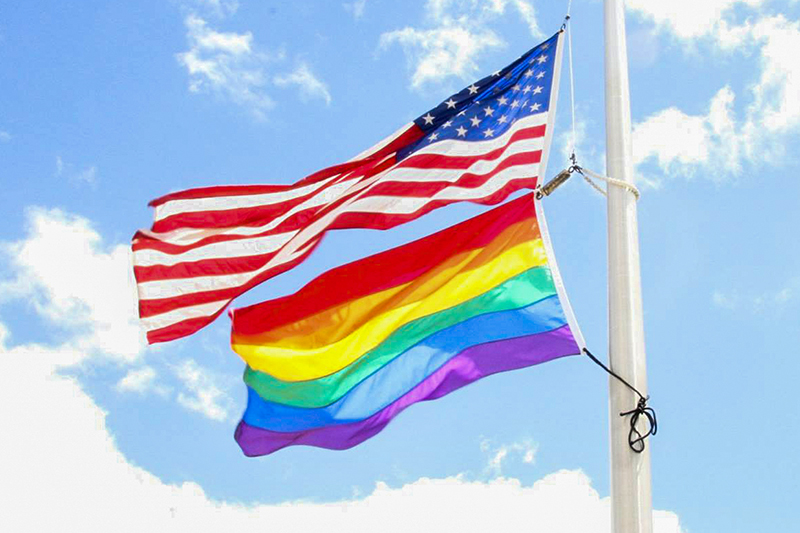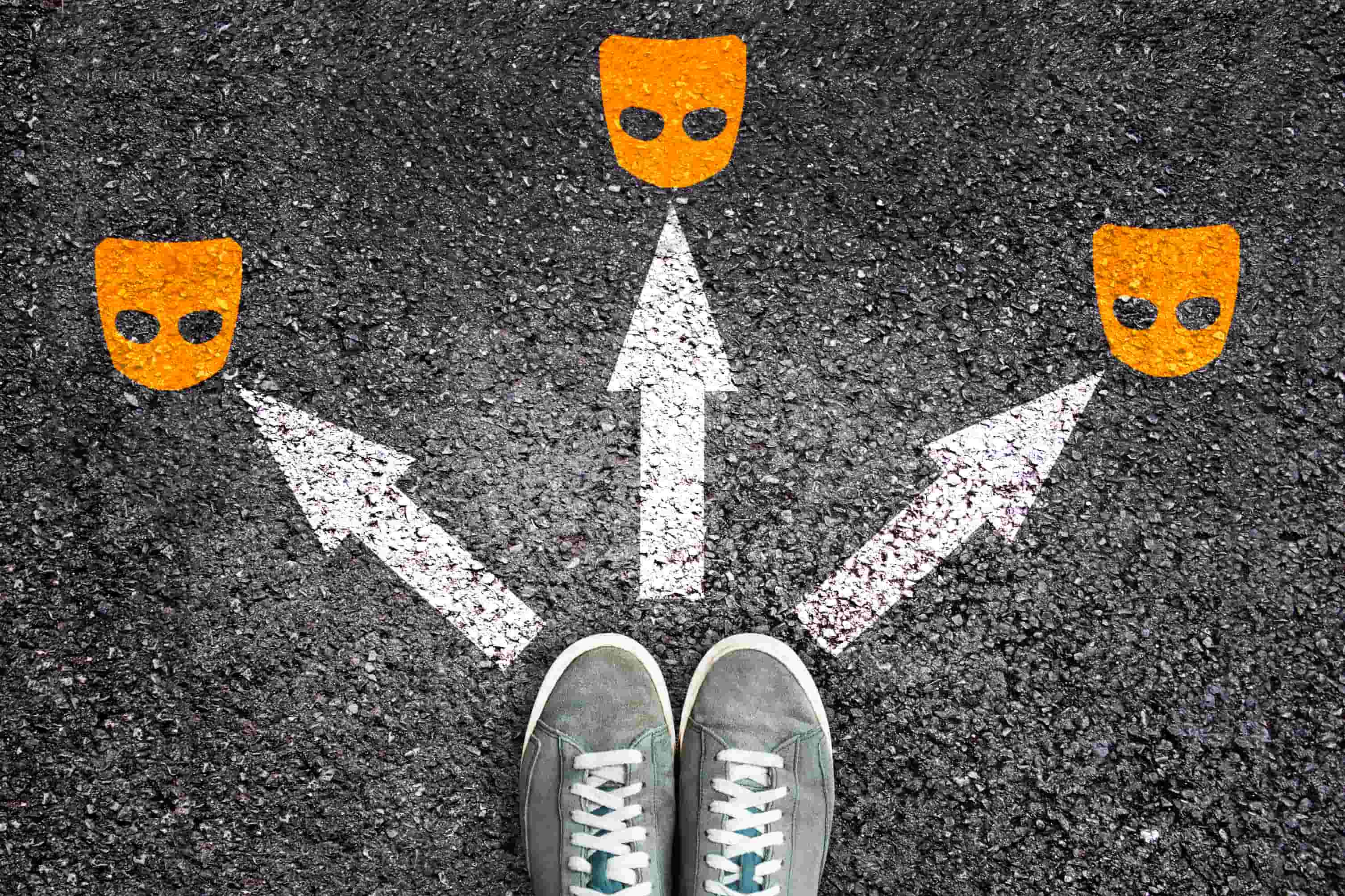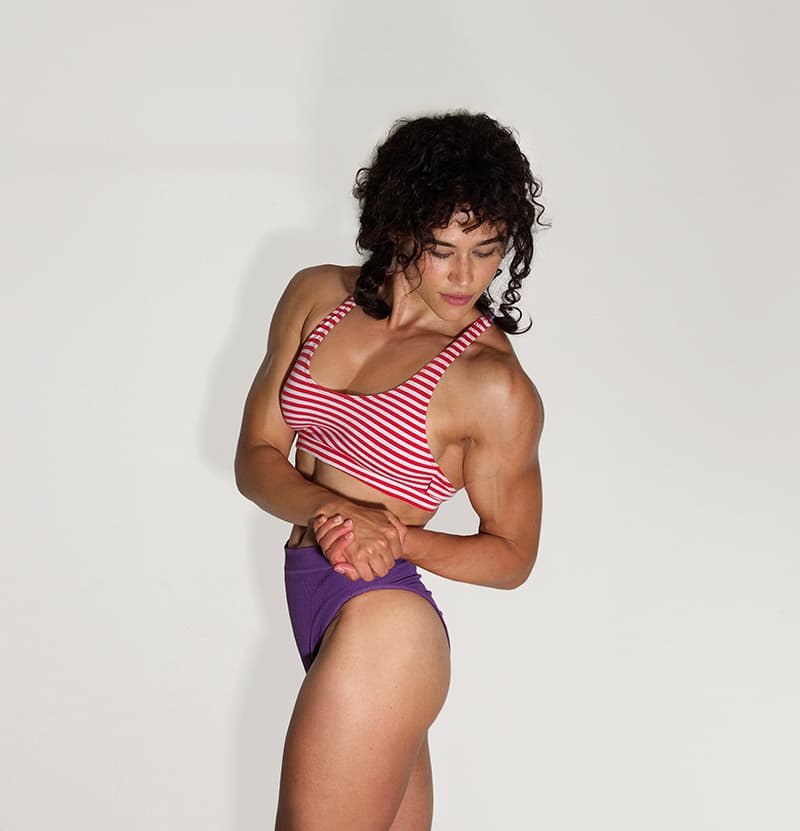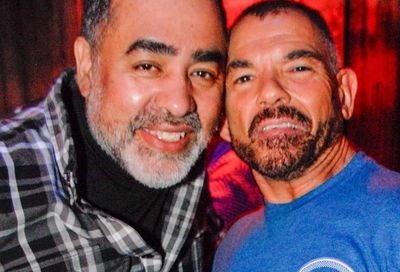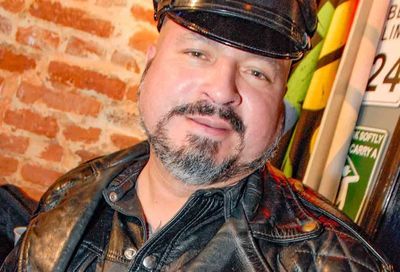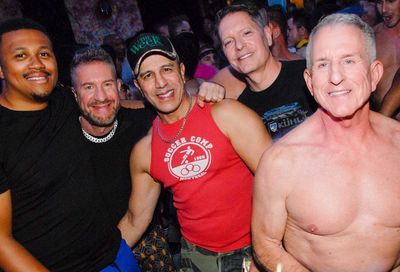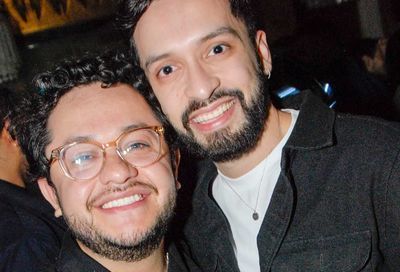The Baltimore Eagle is Ready to Fly
Baltimore Eagle co-owner Chuck King talks about how the leather bar plans to embrace the entire LGBT community

“We get phone calls and emails every single day: ‘Are you open yet? Are you open yet?'”
To say people are excited about the reopening of the Baltimore Eagle would be an understatement. When the leather bar finally opens its doors again on Monday, Jan. 16, Chuck King and his staff are prepared to get slammed by a rush of eager customers.
“We know we’re going to get our asses handed to us,” says King, one of four co-owners of the entertainment complex. “And that’s okay. We’re ready for it, but we want to try and do it as quietly as possible. I don’t know if that’s going to be possible.”
Not if the response he’s been getting in the run up to launch is anything to go by. It’s been four years since the original Baltimore Eagle — located on the same plot of land at 2022 N. Charles St. — closed. For two decades, the bar served Baltimore’s leather community, until the the death of owner Richard Richardson forced it to shutter.
The bar was bought by Baltimore real estate developer Ian Parrish, who intended for it to reopen under new management. In June 2014, Parrish approached King, his husband, Greg, and John and Bob Gasser to manage the property. King remembers working out the club’s initial business plan during a weekend in the Gassers’ New Jersey condo in August 2014.
“We locked ourselves in the condo for three days, and said, ‘If we’re going to do this, we’re going to have this business plan. We’re going to hammer it out, we’re going to come up with all the details,'” says King. “And we did. We sat there for three days, day and night, arguing, saying we want this, this person wants that, whatever.

“Since then, it’s changed even more so. There’s things that we nixed and things that we added, but essentially it’s still the same business plan from the beginning, which is great. We’re really proud of that and we’ll see that mission and that vision through no matter what.”
What makes the new Baltimore Eagle distinct from the old bar is its diversification. The complex features not only a leather “Code” bar, where fetish wear is required to enter, but a sports bar, an outdoor patio area, and a small dance floor on the first floor. Upstairs, there’s Nest nightclub, which has a stage for drag shows, musical acts, and entertainers, and can be rented out for private parties. And there’s a packaged goods store that will sell wine, beer and liquor, a fetish art gallery, and a leather shop — all scheduled to open two weeks or so after the main bar.
“I think we’re past the overwhelming parts now, because we finally have our foot into the ground,” King says. “I’ve never run a leather shop before. I’ve worked in retail tons, and so has Greg, but a leather shop? Luckily, we found a great partner.

“The other overwhelming aspect was, we had no idea how much money this was going to take. We initially thought, ‘Oh, you know, $300,000 should be good,’ and it probably would have been if we had just kept the downstairs and turned the upstairs rooms into apartments, but we’re hundreds of thousands of dollars over budget.”
Not that overspending will matter once people start experiencing the new space.
“We believe the community will be thrilled with what we’ve put into it, so we don’t think we’ve made a mistake by going over budget,” King say. “We don’t want to do something half-assed, we want to do it the right way from the beginning.”

Part of that overspend can be attributed to legal and local wrangling required to finish construction. Additionally, King and co. had to sweet talk several local community organizations, who had accused the Eagle of failing to be transparent.
“When we finally…showed them drawings and visions and everything else about what we are going to do, they fell in love with us,” says King. “They have been behind us ever since, and now they call us ‘the shining beacon in Charles North’ and they keep telling us that we’re going to really help change this environment around us and we’re all about it.”
That support is part of what will fuel the Eagle’s success, but it’s also the passion King and the other co-owners have for the place — for leather, for its history, for the community. Even if they never make millions with the Baltimore Eagle, knowing that they’ve given people another place to call home is enough. If it’s successful, that’s just a bonus.
“We’re not doing it because we want to be rich,” says King. “We’re doing it because we’re passionate about it.”

METRO WEEKLY: How did you get involved in the leather scene?
CHARLES KING: When I first moved to Los Angeles, I was working in a department store. Leather had always intrigued me. The badass biker and that sort of thing always stuck in my mind. I worked at the Broadway department store, which I think Macy’s ended up buying years later. There was a gentleman in the suit department, and his name was Sam and he had bright red hair and a bright ’70s mustache. Really nice guy, very flamboyant. I had just turned 21, and I expressed interest in going to a leather bar after we had become friendly.
He was like, “Oh, I’m going to take you to a leather bar.” He said, “Meet us at this Mexican restaurant in Silver Lake.” I can’t remember the name. He didn’t come to the restaurant, but another friend of ours did, so it was me and two other guys.
They said, “Okay, we’re going to go ahead and go to the Gauntlet.” I’m in a black T-shirt and jeans and I don’t even think I had boots. They told me what to wear, and I wasn’t prepared, but I was okay. We go into the Gauntlet, and I’m not kidding you, it was wall-to-wall men dressed in leather. I was like, “Holy shit, I’m so terrified but so excited at the same time.”
I’m standing up against the wall and all of a sudden comes walking this leather guy and he’s got glasses on and he’s got the cover, the master’s cap, and he’s head-to-toe leather, and he’s just walking by and I’m thinking, “Oh, that guy’s really hot” and he takes a look at me, and he stops, and he goes, “What’s up, boy?” I just didn’t know what to say. All of a sudden, he takes off his glasses, and it was Sam. And he goes, “Hey, girl! What’s going on?” It was the funniest moment. It was such a memorable experience because it really broke me, in a sense, of this image that I had in my head.
I’ll always remember that. It was fun, but it was terrifying at first to go into a leather bar, because even though I knew who this guy was, I didn’t know anybody else, and everyone was in leather. I’m just this kid from the Midwest who’d only been there six months, and wearing totally inappropriate stuff for a leather bar, but it was my first turn, so it was great.

MW: Did you start going regularly after that?
KING: It was a very occasional thing. I was still way too young and nervous to even attempt going there by myself. I don’t think I ever did go there by myself.
MW: When did you begin to get more immersed in the scene?
KING: I’m just going to be real honest here. Before I was able to feel comfortable going to the leather bars myself, back in the day, we used to have these hotlines that you would call for sex. I remember reading one of the gay newspapers in West Hollywood and seeing this particular ad called the Leather Line, or something like that. I dialed that thing probably twenty times before I finally got up the nerve just to actually get on the phone and talk to someone.
If you didn’t like someone you could press nine and they’d go to the next person or the next person or the next person, and then I finally met somebody who was a serious leather guy and ended up going to his house and having my first experience. That was in the early to mid-’90s. That’s how I think a lot of guys hooked up.
I started dating a leather guy who was a master-type, and he wanted me to be his boy and quit my job and go to school and clean the house and that sort of thing. I could never do it. I’m too independent for that. When we were dating, he would take me to leather places and Tom of Finland art shows, things like that, and that really gave me some exposure.

MW: Was there any part of the leather or fetish scene that shocked you or made you think, “Maybe I’m not into this as much?”
KING: If you’re into fetish or kink or whatever, there’s certainly things not everybody is into or willing to try. Even today, there’s things. Certainly brown hankies. When you first hear about that, or fisting, or extreme things, you’re like, “What is that?” Now I’m desensitized to all of that thinking, but back when I was younger, I had no idea what that stuff was and then when I found out about it went, “No, that’s bullshit,” thinking somebody was pulling my leg. Like puppy play. I think today, it’s still so hard for people to wrap their heads around it, but it’s such a way of the future.
It’s like the leather community had a dry spell, because after the AIDS crisis, they started forming back again, but it was baby steps, because a whole part of the community had passed away. Then, all of a sudden, there’s this thing called pup play, and that reinvigorated the leather community. It allows younger guys to get into that and they can call themselves pups, and puppies traditionally don’t listen very well, so they get to play that independent role because, “I’m a pup, I don’t listen.” They still get to experience that leather, that kink. Leather can be very expensive, but if you call yourself a pup and you put a little mask on, then you can get into a leather bar or you can go and meet people who are into that lifestyle and then learn about it.
That, I think is great. That has drawn this young crowd, this young millennial crowd. I think the average age for MAL probably used to be about 35 to 40. Now the average age, I think is probably 25 to 35. You still get your older guys. We still have tons of them, but the age range is really, really moving down, and that’s great, because it’s really going to help the future of this community.
MW: What does leather mean to you personally?
KING: Leather, to me, is a form of expression. It’s a way for me to feel good about myself. It doesn’t mean I have to put on leather to feel good about myself, but when I do, I wear it proudly and I feel empowered. I feel empowered because of history, I feel empowered because it looks good, I feel empowered because it makes me confident, in a sense, in a different way than my normal day-to-day confidence. It makes me feel sexual in a way that’s me. It’s a look that I enjoy and that I feel very good in.

MW: You say leather makes you feel empowered because of its history. Can you elaborate?
KING: If you study the Eagles, they started back in the 1940s. They had been in war and had experienced camaraderie with their military brothers. Many of them were straight. Then, when they came back from the war, that was all taken away from them because the war was over and they didn’t really have any other way to express that. That’s how these motorcycle clubs began. Motorcycle gangs, in a sense, in San Francisco and other places around the world, and that’s when the first Eagle happened.
When I speak about historically, I mean when I put on my leathers, I feel a huge sense of camaraderie with my brothers of leather. I’m a member of Command MC here in Baltimore. I’m very proud of that. When we all do outings, whether we’re wearing leather or not, we have a great sense of pride of who we are as a club, because we do good charity work and we love each other very closely. It’s really about love and about sharing and compassion and honesty.

MW: The Eagle franchise has become known for having a similar feel, no matter which city you go to, with that traditional, dark, cruisy bar atmosphere, common when the leather scene was just starting. Why do you think that has become emblematic of the Eagle “brand?”
KING: You said emblematic. It’s exactly that, and it’s something that, if we didn’t offer it, we wouldn’t really rightfully have the ability to use the Eagle name. I think if we didn’t offer that, some sort of a dark, cruisy leather bar aspect, then we would be lying to ourselves and trying to pretend like we’re something that we really shouldn’t try to pretend we are.
Back in the ’70s, they would paint a building, a little, small, couple rooms black and they’d put a rainbow flag outside and then they would say, “Hey, we’re a gay bar” and it’d be packed every single night. Today, you have to really diversify to be a successful business. We’ve diversified in ways that even we’re unsure, because we don’t know how everyone will react. The preliminary results from what we’ve done and through our research and from bringing friends and family and other people in, have been off the charts, and that’s great. We’re thrilled about that, but you really never know until you open your doors.
A big part of that diversification also means that we had to, in our eyes, put this a little bit more into the mainstream. We have things like a packaged goods store, we have a sports bar, and we have an upstairs nightclub that’s going to appeal, hopefully, to many people. That allows us to take the square footage that’s normally expensive and be able to have that dark leather bar, and be honest to our history, while still looking forward to the future without ever forgetting about where we came from.

MW: You’re going to have the back “Code” bar where only those in leather or fetish dress code will be allowed in on Thursdays, Fridays and Saturdays. Does that extend to other scenes, such as puppies?
KING: Definitely. It can be puppies, puppy play, and sports gear. There’s one particular fetish that isn’t going to work for us — suit-and-tie fetish. It’s a fetish to some people, but that’s not what we’re looking for. But if you’re into some sort of fetish gear that’s recognizable, absolutely.
MW: What’s the biggest risk in opening the bar?
KING: The biggest risk is just through diversifying and whether or not people will buy into our vision. Whether or not they thought we are not enough leather, or we are not enough underground dark bar.
If it was small, if it was 2,000 square feet and that was it, and it was just a leather bar, yeah, you can still succeed. There’s tons of them all over the country and they do really, really well but if you have a property that’s 10,000 square feet, you can’t just have a leather bar. It’s just never going to work and be profitable and allow four people to actually live on even a small income.
MW: Throughout the country, there’s been closures of gay bars, particularly leather bars, and some have wondered whether a business venture like this is even sustainable.
KING: I don’t think it’s a seeming failure of leather bars. Look at any of the leather bars that have closed within the past 10 years or so. You have the Chicago Eagle, owned by the same owner that runs International Mr. Leather Competition. It didn’t close because of failure. It closed because the owner was tired. He’s in his early 80s and he just doesn’t want to have to deal with it anymore. That’s why it closed, because he just said, “Fuck it. I have IML. I make a ton of money on IML. Why do I want to bother myself with this bar now, too?” That’s why it closed, and it’s still an unoccupied property, from what I understand. It’s just sitting there. I don’t think he’s actually sold it yet.
In Los Angeles, the Gauntlet had closed. I don’t know what the circumstances were. Any of these leather bars that seemed to have closed within the past decade or so, there’s a couple of things that you have to look at. You have to look at the age of the owner. Almost every single one that closed, the owner was either in his 60s or 70s, or even early 80s, and they just wanted out. They are in areas where the real estate has gone up a lot in the last 30 years, so now there’s more money into it.
MW: Do you think mobile apps like Grindr or Scruff are hurting gay bars?
KING: I don’t believe that. I think that’s a cop out. The easiest thing to say is, “Oh, people on Grindr.” Everyone has the same experience. When you get on Grindr and shit like that, how many people do you ever really hook up with? Almost none, right? I don’t care if you were the hottest guy in the world, it’s not like people are hooking up every single day on Grindr. That experience is pretty rare. You can ask anybody, I don’t care what you look like or who you are, and it’s a lot of bullshit and it’s a lot of gameplay. I guarantee it’s not Grindr.
Grindr is a waste of time for all of us when we have nothing better to do. We pull it up on our phone and we start chatting to someone and then you never talk to that person again. Maybe six months later, “Hey!” Honestly, I think I hooked up with somebody on Grindr maybe twice? I’m not kidding you. I don’t think that’s the problem.
MW: Then what is the problem?
KING: We are not forcing ourselves to really take a look at what the issues are. The issues are property value — real estate’s going up.

MW: What role do you see the Eagle playing within the Baltimore gay scene?
KING: It’s very interesting. The Baltimore gay scene is in huge transition right now. Recently, The Hippo closed. Not too long ago, PW’s in Laurel closed. There was another gay bar out near Greektown. I forget the name of it, but they closed maybe a year-and-a-half, two years ago. I don’t think they’ve closed because they are unsuccessful. Chuck Bowers, when he closed The Hippo, he didn’t close it because he was broke, he closed it because he was just tired. He just needed to retire. We chat fairly often, because we bought a bunch of their stuff from their building.
You still have Leon’s and Drinkery and Grand Central over there, but Grand Central’s Don Davis has been very clear that he’s looking to retire. If somebody were to come in and buy it, he would jump at the chance. I don’t know how long that will be around. I hope it’s around for a while because I think gay bars do better when they have more options and competition, because it keeps us on our toes. We don’t want to be the only place in town. It’s great for revenue, but we don’t want to be the only place.
The gayborhood is moving in this direction. The Pride Committee just decided that Pride is now going to be here. They’ve left Mount Vernon because they were getting no support in Mount Vernon. Mount Vernon is on the up-and-up, and it’s very gentrified now. So the gayborhood is looking for a new place to call its own and this neighborhood is very in the very early stages of that.
We see ourselves as a flagship to help this neighborhood really grow and become something way better than it is right now. The people in the area are amazing. It’s funny, because we didn’t know how the neighbors would react, being this old, dark leather bar, but we’ve had almost every single neighbor tell us how they’re so excited we’re going to have a restaurant, and they don’t care it’s a gay bar, they want to come and spend money and get great beer. People just don’t care anymore.

MW: Have you gotten any church groups or community groups protesting you?
KING: No, not at all. It’s been pretty good, actually. There’s a church right over here, I think it’s St. Mark’s, if I’m not mistaken. That’s where a lot of community association meetings are, and they are so welcoming to our community. It doesn’t matter who you are or what gender you come from or whatever, but they don’t have any issues with us even having our meetings there. I’m sure with Pride happening literally right outside in front of our building in June, they’re going to be asked to participate. I think we live in a pretty good area. It’s blue collar, it’s very friendly, it’s hipster, underground. It’s transgender, it’s gay, it’s straight. It’s a really crazy mix around here and that’s really cool.
Recently we put a billboard up, right next to Penn Station. It was a huge billboard with a leather guy on it and it said something like, “Buckle up, your ride is coming.” The comments on social media about that were, “Holy crap, back ten, fifteen years ago there’s no possible way yes could get away with doing that.” It’s okay now, because we need to be out and proud of who we are, whether we’re leather men, or queer, or transgender. It’s to say, “Look, it’s accepted and it’s okay, and it doesn’t matter what background you come from or who you are, it’s just about coming and celebrating our differences and our diversity. Come to our place because we accept you.”
The Baltimore Eagle, at 2022 N. Charles St. in Baltimore, will have a “soft” opening on Monday, Jan. 16. An official opening party is currently scheduled for the weekend of Feb. 3-5. The Eagle is located at. Call 410-200-9858 or visit thebaltimoreeagle.com.
Support Metro Weekly’s Journalism
These are challenging times for news organizations. And yet it’s crucial we stay active and provide vital resources and information to both our local readers and the world. So won’t you please take a moment and consider supporting Metro Weekly with a membership? For as little as $5 a month, you can help ensure Metro Weekly magazine and MetroWeekly.com remain free, viable resources as we provide the best, most diverse, culturally-resonant LGBTQ coverage in both the D.C. region and around the world. Memberships come with exclusive perks and discounts, your own personal digital delivery of each week’s magazine (and an archive), access to our Member's Lounge when it launches this fall, and exclusive members-only items like Metro Weekly Membership Mugs and Tote Bags! Check out all our membership levels here and please join us today!





